13th Century Portative Organ Reconstruction (Part I)
This text is an English translation of an article published in the Japanese magazine NPO in 2018 (n. 37). It starts with an introduction by Mr. Osamu Osawa, and then it goes on with my own text.
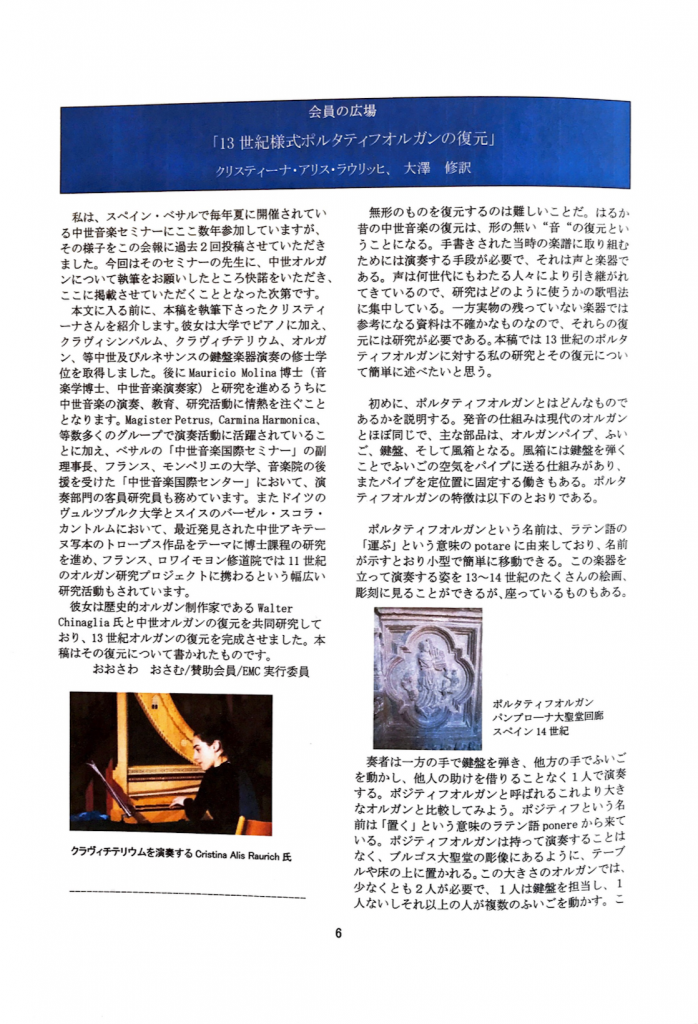
“For several years I have attended the medieval music school at Besalú (Spain), which is held every summer, and I reported my experience in the seminar two times already in this bulletin. This time, I asked one of teachers in the seminar to write an article on medieval organ and she kindly accepted the proposal. Before starting her article, I would like to introduce Ms. Cristina Alís Raurich who wrote it.
After receiving the master diplomas on piano, medieval and renaissance keyboards (clavisimbalum, clavicytherium, hammered clavisimbalum, organ), and studying with Dr. Mauricio Molina, musicologist and musician in medieval music, Cristina decided to combine her passion for teaching with a performance career (ensembles Magister Petrus, Carmina Harmonica, Hamelin Consort, Le Souvenir, Diapason, among others) and with musicological research. Currently is part of the faculty and assistant director of the International Course on Medieval Music Performance of Besalú and is visiting scholar (performance) at the Centre International de Musiques Médiévales supported by University Paul Valéry, and the Conservatoire in Montpellier (France). At the moment she is enrolled in a Doctoral Program at the University of Würzburg (Germany) / Schola Cantorum Basiliensis (Switzerland) working on a recently found medieval Aquitanian manuscript, focusing on the trope repertory. She also is leading a research project on 11th-12th c. organs at Royaumont Abbey (France).
She collaborates with the historical organ builder Walter Chinaglia on the reconstruction of medieval organs, leading to the reconstruction of a 13th c. portative organ. This article is a product of this work.”
– Osamu Osawa
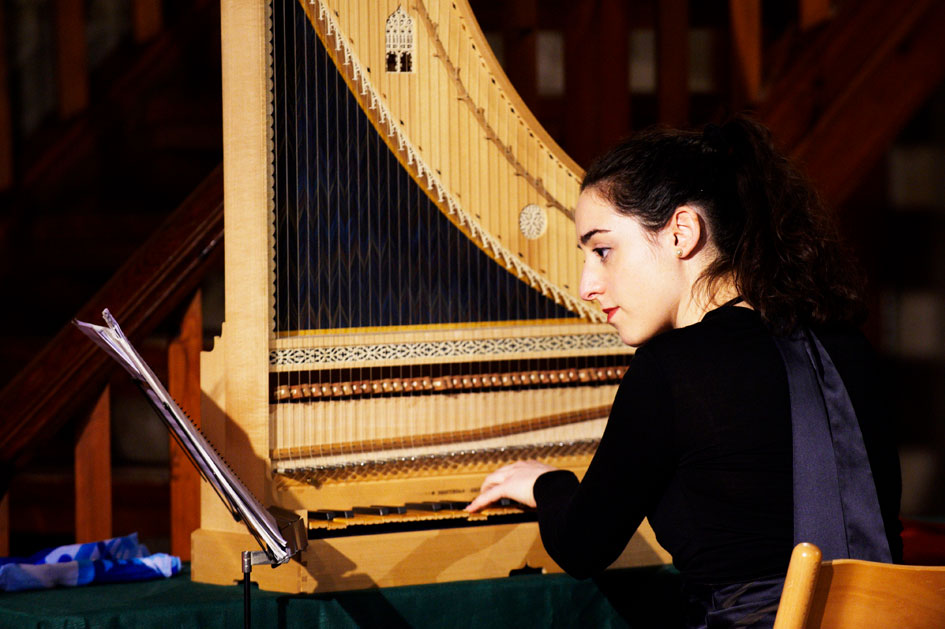
How do we reconstruct the intangible? Reconstructing early medieval repertories is synonym with reconstructing sound. Approaching musical notation manuscripts also requires us to have the tools we need for the performance: voice and instruments. The voice has endured throughout the generations, so the research must focus on reconstructing the ways in which we use it. Meanwhile, when it comes to the instruments, when specimens had not been preserved, our references are uncertain. Those instruments need to be studied before construction can start. In this article I present briefly my research and reconstruction of a portative organ of the 13th century.
What is a portative organ? Its principles of functioning are very similar to those of current-day organs. The main parts are: organ-pipes, a bellow, a keyboard, and a case. Such case contains a mechanism controlled through the keyboard that connects the air of the bellows to the pipes, and the structure that keep the pipes in its place.
The main characteristics that make portatives unique are:
Portatives are small and easy to move from one place to another. The name “portative” itself comes from the Latin “portare” and means “to carry, to bear”. In many examples of iconography from the 13th and 14th century the instrument is played with the organist standing. In some other examples, the performer plays sitting.
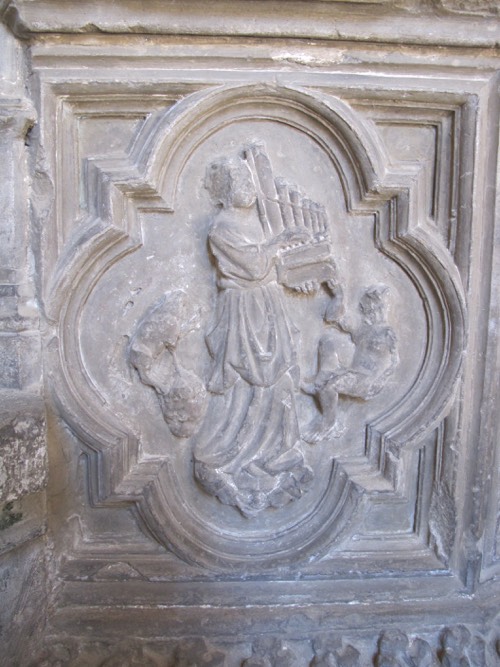
One hand plays the keyboard while the other hand actions the bellow. The musician performs the portative organ alone, without help from other individuals: this is an obvious difference with larger organs called “positive”. The word “positive” here comes from latin “ponere” which means “to place, to lay”. Positive organs are not held on the performer’s lap, but positioned on a table or on the floor (see the image of Burgos Cathedral). These larger organs require at least two people: one to play the keyboard, and one or more to action two or more bellows. The number of people required to obtain sound is the main difference between the two types. These two kinds are the most common, however we can occasionally find a positive organ which is placed on the table/floor, played by a single person in the manner of portative organ.
Organs that have two or more bellows can produce a continuous sound, since there is always at least one bellow that send air to the pipes. In the case of the portatives with one bellow, when the air from the bellow has all gone into the pipes, then the bellows needs be refilled, thus causing a break in the sound in order to “breath”, to take air into the bellow and continue playing again. This mechanism is exactly the same as singers do inside their bodies: the bellow is their lungs, and the hand that presses is the diaphragm. When playing portative organ with one bellow, the musician regularly needs to breath.

The bellow responds to the changes in pressure that the musician exerts with his left hand; that is, the player controls airflow obtaining and thus the tone can be modulated: both pitch and the dynamic can be controlled. At the same time, though, these are inseparable: when pressing the bellows more energetically, pitch and dynamic go up. The same applies to positive organs and, in general, in any organ that does not work with an electric motor. What is unique to the portative is that the player is the only brain to decide how to coordinate both hands: one playing the keyboard and the other modulating the pressure on the bellow. With positive organs, the same result requires planning and agreeing intentions in advance between the participants, as if they were playing in an ensemble.
In contemporary times, both education programmes in early music schools and conservatories and professional performance of medieval organ music have been focused mostly on the repertories after 1300, that is, in the Late Middle Ages. The Middle Ages start circa the 6th century and finish with the Renaissance, and is commonly divided into three periods: Early Middle Ages (6-10c.), High Middle Ages (11-13c.), and Late Middle Ages (14-15c.). Centuries are approximative: in such a broad area with such a range of contexts, it is not possible to establish an exact date where one Age finishes and the following Age starts.
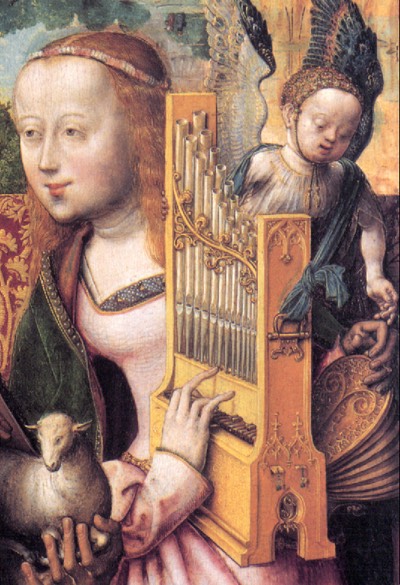
Since 13th century repertory is one of those I perform and teach the most, I realized that I needed to have a suitable portative organ for this period, and I had not seen one thus far. From this moment onwards, I started researching the sources – written and iconographic –, paying special attention to those related to medieval organ making. I became interested in musical archaeology, which has been a fundamental field for the reconstruction not only of the instrument itself, but of its contexts and functions.
Despite the amount of published works on the medieval organ – some of them written by prestigious musicologists –, a reconstruction of a portative organ of the 13th century according to the sources had not yet been attempted. Iconographic evidence of this type of organ is rich, and information from written medieval sources on medieval organs is altogether invaluable since they transmit detailed information about its mechanism, materials, tools, proportion of pipes, function, placement, etc. I have been studying a large number of sources related to medieval organs from the 10th to the 13th century. The reconstruction has been carried out based on musicological tools and methods, such as experimental archaeology. The number of factors taken into account in this reconstruction make the result both relevant and unique.
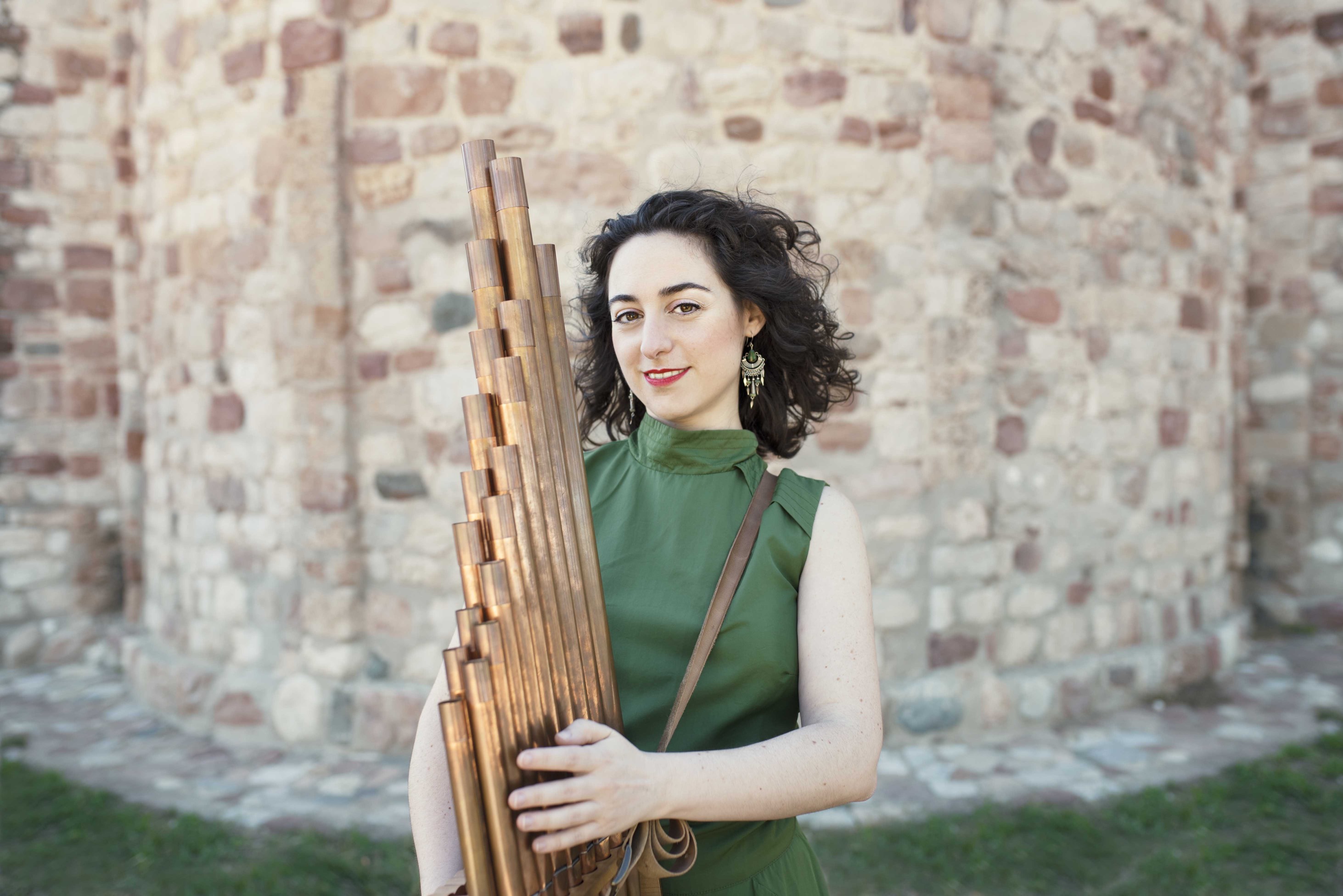
Continue to part II of this article here
Are you thinking to build a portative organ?
This website is probably the only place where you will find detailed and specialized information about early portative organ building. Accurate, rigorous, for free. When using this information or variations of it, remember where you found it. Thanking – mentioning – where and from who you obtained information will show you are a virtuous and grateful person.
Also beware that contents of this website are protected by copyright, as it is the non-published research about this portative organ.
For more information contact me: info@medievalorgan.com
